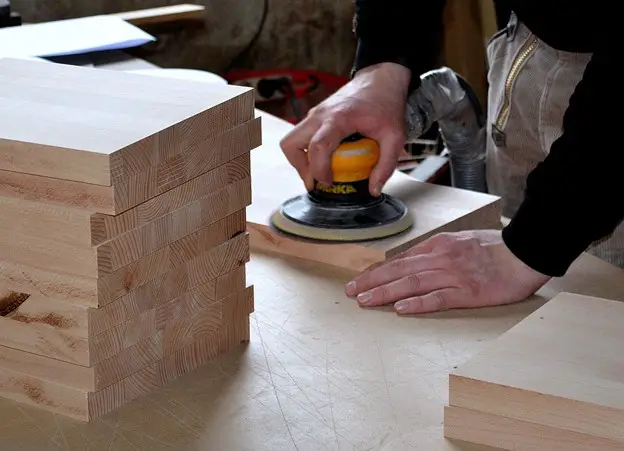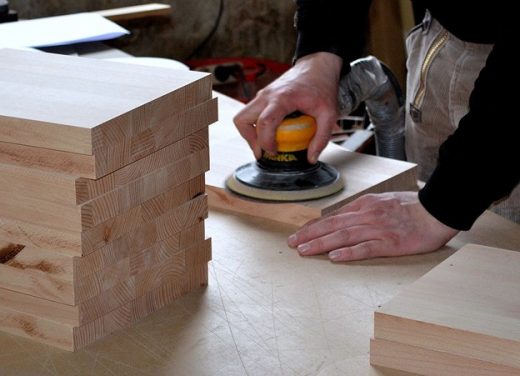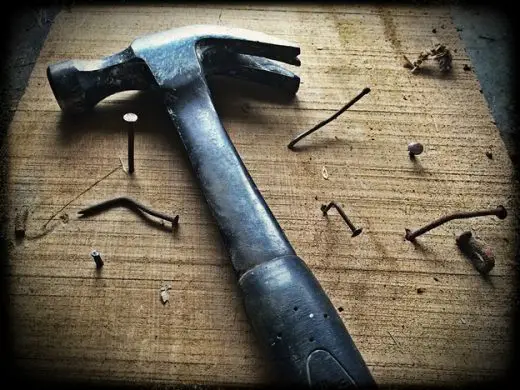Everything you need for woodworking guide, Building cutting wood tips, Woodworker advice
Everything you need to get started with Woodworking
19 Mar 2021
If you are reading this, there’s a good chance that you have developed an interest in woodworking and want to learn more about it. We guess that much of this stems from the feeling of fulfillment you get after completing a woodworking project, and most of us can relate to this. There is a certain sense of accomplishment you enjoy after building something with your hands from scratch.
Having said this, you may be wondering, “But where do I start?” From tools you need for cutting, finishing, assembling, and measuring, to those that can hold wooden parts while the raw materials are being worked on to create finished products, we understand deciding what you need as a beginner woodworker can be overwhelming.
Do not fret! This article will provide a step-by-step guide to all the resources you need to get started with woodworking. Let’s briefly go over a few of the must-have tools that every beginner woodworker must have in their toolbox.
Saws
The first step in almost every woodworking project is the cutting process. You will need to cut down raw wood pieces to different lengths to fix them into your desired model. Saws are the most commonly used tools for ripping and crosscutting wood stock and are made of a tough blade with a hard-toothed edge. There are various types of saws you may use depending upon the wood material and cutting procedure.
Circular Saw
It is an electric tool that consists of a round or circular blade with a sharp set of teeth protruding from its surface that tear through the wood. There are three types of circular saws, each performing a different function.
- Ripping Blades: Cuts wood lengthwise along the grain
- Crosscut Blades: Cuts wood across the grain
- Combination Blades: Used for both ripping and crosscutting
Jigsaw
Also called a saber saw, a jigsaw is an essential component of every woodworker’s toolbox. This electric power tool is designed to make cuts that can be straight or curved. As opposed to the circular saw, a jigsaw blade cuts with a back and forth or up and down motion.
Table Saw
A table saw is designed like an upside-down circular saw as its blade protrudes from underneath the saw table or work surface. Its primary function is to make cuts not possible with other saw types. Since the table saw is used to produce the initial cuts, it is an integral part of any workshop. The professionals behind woodworkmag.com point out that due to its high frequency of use, there is always an underlying danger of fatal injury if not operated carefully. It’s best to read up more on the different types of table saws and how to ensure all safety measures while using them.
Hand Saw
A hand saw consists of a toothed steel blade attached to a wooden handle used for manual cutting of wood pieces. Despite being one of the oldest woodworking tools out there, hand saws have retained their relevance in the workshop. The best part about handsaws is that they are relatively light-weight and can be operated without an electrical connection.
Planing and Sanding Supplies
Once you cut through pieces of wood with your fine blade, they would still give a rough look. Here is what you would need to give your wood a smooth and attractive appearance:
Planes
These are tools designed to cut over rough surfaces on the wood and remove slivers. The fixed blade shaves off wood fibers and makes them progressively smoother. There are several different types of planes you would want to consider that best fit your needs.
Random Orbit Sander
This handheld vibrating tool gives the wood a finishing touch and makes the job much easier by taking the strain away from your hands. Vibrating in small circles or orbits, it leaves the wood ultra-smooth and mark-free.
Assembly Tools
The final to complete your woodworking project would be to assemble all the components into a finished product. Here are a couple of indispensable tools you would need initially:
Hammer
As one of the most essential woodworking tools, hammers are universally used to drive and remove nails, fit parts, or even break up objects. While there are several types of hammers, each designed for a specific purpose, there is nothing quite like the standard claw hammer that would fit all your needs as a beginner woodworker.
Power Drill
As you will be using this tool in almost every single project, a good quality drill can be your best friend as a beginner woodworker. While you can take a hammer and start pounding the nail, there is no guarantee of how many times you may strike your thumb with this approach.
An electric drill is a tool for the job that will allow you to easily screw pieces of wood together or drill holes of various sizes precisely. You would want to choose the versatile cordless power drill that can perform additional tasks, like stirring mortar and retracting screws quickly. Doing so will help you become more efficient in your woodworking tasks.
Since this is a beginner’s guide, it was only fair that we discussed the essentials that you will need to set sail on your woodworking voyage. When most people think about woodworking, the first aspect that tickles their imaginations is the vast array of tools that are required to get going. Although you can indeed find numerous different types of woodworking tools on the market, there’s no need to blow thousands of dollars on such tools as a beginner.
Most tools that you will work with as a beginner are relatively cheap and easy to operate. We recommend that you start with these primary woodworking tools to get a hold of the basics. These will prepare a foundation to help you be more innovative as you become more proficient with their use.
Comments on this Interested In Woodworking? Here’s Everything You Need To Get Started article are welcome.
Woodworking
Woodworking Posts
Home remodelling Need a reciprocating saw
How to plunge cut with a fixed base router
Ultimate Guide to CNC Process for Architectural Work
Home Articles
Residential Architecture
Comments / photos for the Interested In Woodworking? Here’s Everything You Need To Get Started page welcome







